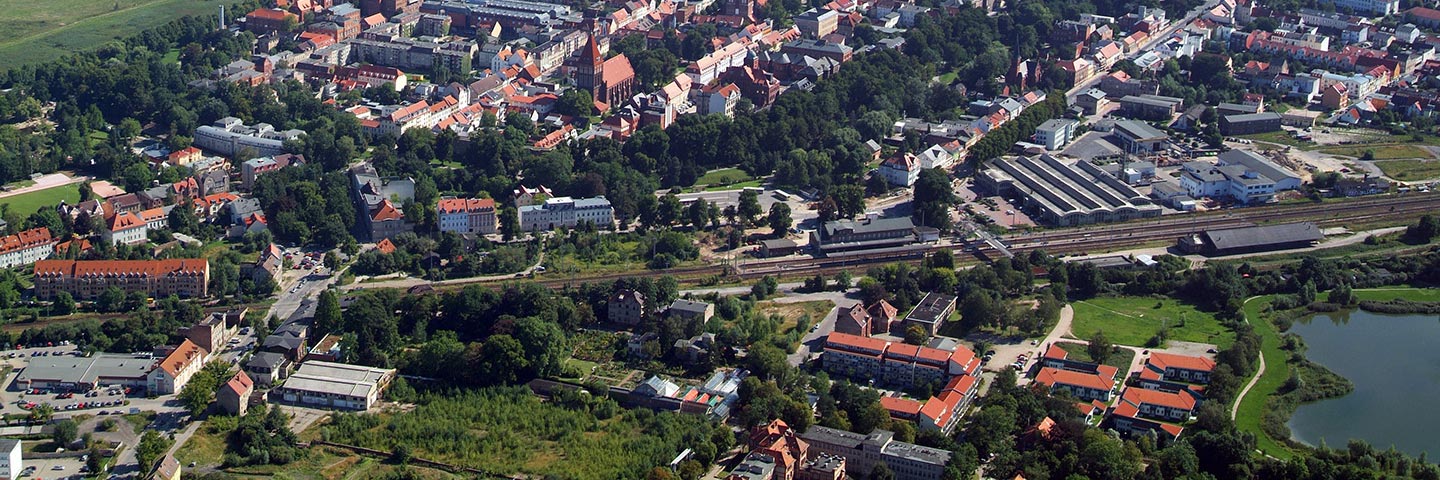News/All pieces
GMC with theatre and expert talk in Schwerin
German Unity Day - not without peatlands

GMC with theatre and expert talk in Schwerin
25/09/24 Mecklenburg-Vorpommern is hosting the multi-day celebrations for German Unity Day this year. An opportunity to present the state's moors and research with a look into the past and perspectives for the future - packed into a varied program. Entertaining, open to the public and free of charge on Thursday, October 3 from 15:15-16:45 on the Zukunftsforum stage in the inner courtyard of Schwerin Castle:
15:15 “Moor muss nass, oder was” - A play by the 9th grade of the Martinschule Greifswald: the moor researcher Prof. Dr. Hans Joosten from Greifswald manages to travel into the GDR past to the year 1958 with the help of Mephisto. There, thousands of young people are busy draining the Friedländer Große Wiese, a vast peatland in Mecklenburg-Western Pomerania. Why are they doing this, will the professor succeed in convincing the young people to stop their work and what plans is Mephisto actually pursuing?
15:45 Back in the present, the students meet the bog professor in real life. They ask him questions: Why would Joosten have preferred to stay in the past and why did the enthusiasm of the past turn into the disaster of today?
16:00 What potential does paludiculture offer for agriculture and the economy? What needs to happen politically for more paludiculture and how can research contribute to this? Dr. Franziska Tanneberger (GMC Director and winner of the German Environmental Award), Dr. Till Backhaus (Minister for the Environment and Agriculture MV), Tobias Gruber (Division Manager Sustainability OTTO Group) and farmer Robert Wellen will discuss these issues. The event will be moderated by Jan Meßerschmidt, Head of University Communications at the University of Greifswald.
GMC auf IPCS in Weihenstephan

Overview of our contributions
10/09/2024 From 18th-21st September, the Weihenstephan-Triesdorf University of Applied Sciences is hosting the International Peatland Science Conference (iPSC). Naturally, numerous GMC employees will be taking part with presentations and posters. Here is an overview of them:
Thursday 19th September
14:45 More than a paper tiger: Paludiculture pilot projects in paper production - Clemens Kleinspehn
15:00 Paludiciulture can support biodiversity conservation in rewetted fen peatlands - Hanna R. Martens
Friday 20th September
8:30 Opening with environmental Art ‘MoorReaktor’ - MONAS collective in cooperation with GMC
13:20 Keynote People make Peatlands - practical projects and political processes towards peatland rewetting - Prof. Dr Gerald Jurasinski:
11:15 The relevance of drainage ditches as breeding habitat for mosquitoes in Northern Germany - Felix Sauer
15:30 Water Management for Spaghnum and Typha Paludiculture - Matthias Krebs
15:30 Spaghnum paludiculture sites as surrogate habitats for bog species of many species groups - results of long-term investigation in Northwest Germany - Dr Greta Gaudig
16:00 Bright spots in peatland conservation and restoration Renske Vroom
16:00 Putting Paludiculture into practice - six years of large scale Typha cultivation in Northeast Germany - Josephine Neubert
16:15 Peat formation potential of Typha spp. on a Paludiculture pilot site - Meline Brendel
16:30 PEATMAP: Prototype model for the study of peatland and swob distribution, ecology and carbon dynamics in the Iberian Peninsula lanscaoe mosaic - Miguel Geraldes
16:30 Paludiculture and biomass quality of cattail on a 10 ha Paludiculture Pilot site in Northeast Germany - Nora Köhn
Dr Franziska Tanneberger, GMC co-director and winner of the German Environmental Award 2024, is a member of the Scientific Committee. The conference will take place at the Weihenstephan-Triesdorf University of Applied Sciences (HSWT) campus in Freising. Further information in the detailed programme.
Biogenic polymers, biochar, peat moss harvesting

New paludiculture newsletter
25/07/2024 Biogenic polymers and biochar - both can be related to paludiculture and are the subject of the latest issue of our newsletter. A look at the final report from MOORuse reveals that natural fibres from paludiculture are suitable as biogenic polymers in terms of sustainability, for example for injection moulding or 3D printing. In England, researchers are investigating whether biochar on paludiculture areas increases their carbon storage. We present the interactive online version of the Global Peatland Map and a legal report on rewetting in Germany and its obstacles. And of particular interest to land users: information on current funding for machinery and equipment for paludiculture!
We hope you enjoy reading the newsletter and would be pleased to receive feedback on it by e-mail to communication@greifswaldmoor.de.
Invitation: Conclusion "TyphaSubstrat"

50% less peat is possible
22/07/2024 The aim of the three-year TyphaSubstrat project - harvesting and utilising cattail as an alternative substrate material for press pot soil in vegetable growing - was to develop a peat-reduced press pot soil with up to 50% less peat. At the final event on 5 September in Darmstadt, the project participants will present their results. These show: 50% peat reduction in pressed potting soil is possible! Presentations and dialogue in the morning at the Forschungsring e.V. in Darmstadt will be complemented by a tour of the practical tests in a vegetable nursery and a young plant farm near Mannheim. Detailed information on registration and the programme can be found here.
TyphaSubstrat focuses on cattail in a mixture with other peat substitute components such as sphagnum, green waste compost and wood for press pots, on which lettuce and vegetables are grown commercially. In addition, special technology for harvesting cattail was further developed in the project, and cattail raw material was analysed with regard to substrate properties, including pesticides and herbicides. By reducing the use of peat and utilising paludiculture biomass, TyphaSubstrat makes a dual contribution to the transformation towards climate-neutral use of wet peatlands (paludiculture) and demonstrates possibilities for sustainable substrate production. The proven suitability of cattail biomass as an alternative substrate offers the industry a new renewable raw material that can be produced regionally. A step towards a long-term secure and climate-friendly raw material supply and a contribution to peatland protection. TyphaSubstrat is funded by the German Federal Ministry of Food and Agriculture via the Agency for Renewable Resources (Fachagentur für nachwachsende Rohstoffe e.V.).
Global Peatland Map 2.0!
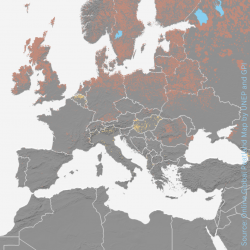
Now online
18/07/2024 The GMC's Global Peatland Map is now available online and interactive! It comprises eleven pages and covers a wide range of topics, such as the extent of peatlands per country, greenhouse gas emissions, biodiversity hotspots, peatlands in protected areas and sources of fire. A series of story maps “Peatlands in the Continents” will complement the Global Peatland Map 2.0. for a detailed look at regions offering key facts on peatland distribution, degradation and options for action. Visually intuitive, easy to navigate and beautifully designed, a first story map on Asian Peatlands can already be tried out.
The web version of the Global Peatland Map is based on data from the Global Peatlands Assessment from 2022, which summarized the best available scientific data to provide an overview of the state of peatlands worldwide. As a partner in the Global Peatlands Initiative, the GMC's map specialists created the online version in close cooperation with the World Environment Situation Room of the United Nations Environment Programme (UNEP).
Climate, water, biodiversity in peatlands and floodplains
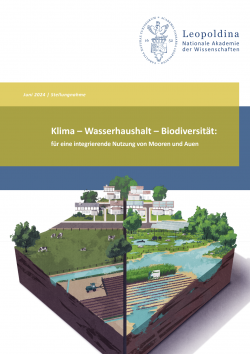
Statement of the Leopoldina
27/06/2024 Climate, water, biodiversity - how this is connected in peatlands and floodplains, what condition it is in and how it can be improved - is now summarized in Climate - Water Balance - Biodiversity: For an integrative use of moors and floodplains, the statement published today by the German National Academy of Sciences Leopoldina. "Nowhere in Central Europe is biodiversity as high as in these wetlands," says Leopoldina member Prof. Dr. Klement Tockner, Director General of the Senckenberg Gesellschaft für Naturforschung. Near-natural peatlands and floodplains are also essential for preventing flood disasters and reducing CO2 emissions. The statement with supplementary digital dossier emphasizes the need to rewet peatlands and restore floodplains. Both are already enshrined as climate and biodiversity goals, for the EU for example in the Nature Restoration Law recently adopted by the EU Environment Council and worldwide in the UN Convention on Biological Diversity. The latter provides for the protection and restoration of at least 30% of the world's land, freshwater and marine areas by 2030. The statement now presents options for action to achieve national and international commitments in climate, water and biodiversity protection and still be able to use these areas economically. This includes protecting intact peatlands, switching to paludiculture, rewarding ecosystem services and including the measures in CO2 emissions trading. Twelve scientists from the fields of ecology, biology, hydrology, sociology, agricultural engineering, environmental economics and law were involved - including Dr. Franziska Tanneberger and Prof. Jürgen Kreyling, two scientists from the Greifswald Mire Centre.
What's the problem?
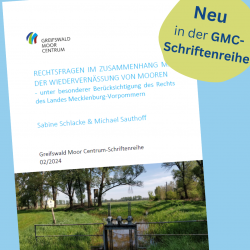
New legal opinion reveals obstacles
26/06/2024 With their vegetation and soils, terrestrial ecosystems such as intact peatlands, floodplains and forests are valuable carbon reservoirs and sinks. However, rapid restoration often fails due to legal obstacles. The new report "Legal issues in connection with the rewetting of peatlands" in the GMC publication series provides a comprehensive analysis and shows possible solutions for the implementation of peatland climate protection. The rewetting of peatlands and their sustainable wet use, paludiculture, play a major role in natural climate protection. There are particular obstacles in terms of land availability, planning and approval. The German government's Natural Climate Protection Action Program aims to protect and strengthen these endangered ecosystems - and to understand and remove the obstacles that stand in the way of restoring these valuable areas. The new legal opinion by Prof. Dr. Sabine Schlacke and Prof. Dr. Michael Sauthoff makes an important contribution to this. It was drawn up as part of the MoKKa - Moorland Climate Protection through Capacity Building project, in which the Succow Foundation, the University of Greifswald and the Baltic Sea Foundation are working together. The results of the report will be presented today at the "Fachforum: Natürlichen Klimaschutz beschleunigen - Rechtliche Rahmenbedingungen verbessern", jointly organized with the Deutsche Bundesstiftung Umwelt in Berlin. The possibilities for implementing the legal policy recommendations will also be discussed.
Peatland research in Brazil and photovoltaics
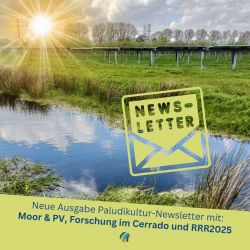
New Paludiculture newsletter out now
30/05/2024 Huge peatlands, lots to do in peatland research - in the latest issue of our newsletter, Felix Beer takes us to the peatlands of the Brazilian Cerrado. The recently founded PaludiAllianz project also has a lot to do. It aims to ensure rapidly growing demand for paludiculture biomass -now! And - lots of interest in photovoltaics on peatlands! The MoorPV project is taking a close look at the win-win-win for the energy industry, climate protection and biodiversity. Also in the newsletter: Save the date for RRR2025, new MoorAgentur founded, new funding for building with renewable materials.
Not only do we hope you enjoy reading the newsletter, but we would also be happy to receive feedback on the newsletter by emailing communication@greifswaldmoor.de.
Save the Date for RRR2025
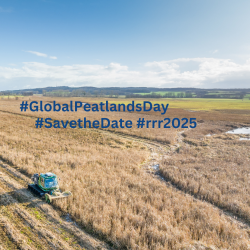
On Global Peatlands Day
02/06/2024 In celebration of this year’s World Peatlands Day, the Greifswald Mire Centre warmly invites you to save the date for the 4th international RRR conference on the Renewable Resources from Wet and Rewetted Peatlands. Taking place in Greifswald, Germany from September 23rd to 26th, 2025, the conference will unite experts from diverse disciplines to share insights and experiences and address pressing questions within the field of paludiculture.
In 2024, "paludiculture" marked its 25th anniversary since being called into life, with significant advancements made in practical knowledge regarding rewetting, cultivation, processing, marketing, policy development and awareness-building, but large-scale implementation is still low. This conference aims to unite stakeholders involved in the utilisation of rewetted peatlands, welcoming scientists, landowners and users, administrators, manufactors, artists, designers and policymakers. By fostering cross-sector networks, sharing experiences and knowledge, we seek to bridge the gap between science and practice and together discuss and shape the future of paludiculture.
Through a diverse program including lectures, poster presentations, excursions, and a range of interactive events, we endeavour to facilitate meaningful dialogue and collaboration. Stay tuned for further details, including abstract submission and registration information, which will soon be available on our website. We look forward to your participation! For conference updates please visit our website rrr2025.com, or follow @greifswaldmoor on the GMC’s social media channels.
Afforesting drained peatlands?
No viable option, new GMC paper shows
13/05/2024 Although the EU Nature Restoration Law was wiped off the EU’s trilogue-agenda in March, scientists took a close look on what was suggested as a restoration measure during the negotiations: active afforestation of degraded peatlands. Their conclusion: evidence for long term overall climate benefits is lacking. Their recommendation: the NRL should foster true natural ecosystems wherever possible, particularly where those are demonstrably carbon capture systems.
For the article “Active afforestation of drained peatlands is not a viable option under the EU Nature Restoration Law” peatland professor Gerald Jurasinski with colleagues of Greifswald Mire Centre and other European peatland scientists assembled facts of several studies. In most cases CO2 release from peat soil degradation will likely exceed carbon sequestration in the forest biomass, as the paper pubished in Ambio Journal of Environment and Society states. It is pointing out the severe challenges to measure greenhouse gas fluxes in peatland forests both with airtight chambers and eddy covariance technique. Another point of critique: the studies quoted in favor of afforestation do not describe the situation after afforestation of agricultural fields or cutover peatlands.
